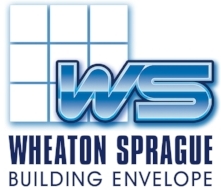Masonry Façade? No Problem!
/WS offers expanded expertise in building enclosures of all types, including both contemporary and historic masonry structures. This includes
Condition assessment and repair design
Peer review services
Construction observation
Water infiltration investigation and mitigation
Evaluation of thermal performance and condensation potential
Kathryn Jaworski, PE, has extensive condition assessment experience for historic and contemporary masonry façade types due in large part to her rope access certification. She was involved with repair recommendations on a number of high profile structures and performed condition assessments, as well as providing construction phase observation site visits including stone repair and stabilization, masonry repointing, cleaning, and testing.
Masonry experience ( a sampling of work, not all inclusive)
Assessment, repair recommendations, and construction phase services of granite façade repairs and sealant installation.
Weld inspection of connections
Post-seismic condition assessment:
Construction phase observation of concrete façade and balcony repairs
Observation of precast concrete façade panel, garage slab, and double tee beam repairs.
Façade municipal ordinance critical examination and condition assessment,
Testing of older brick masonry facades including
shear testing,
compression testing,
anchor pull-out testing, and
removal of masonry prisms for laboratory testing
Fall hazard removal
Water intrusion assessment,
GPR scanning of wall for reinforcement,
Damage Investigation & repair recommendations
Condition assessment of the historic & modern terra cotta façade using industrial rope access techniques and repair recommendations.
Selected Project Examples
Mass masonry walls:
Washington Monument – Washington D.C
National Cathedral – Washington D.C.
Perry’s Victory and International Peace Memorial – Put-in-Bay, Ohio
Salt Lake Temple – Salt Lake City, Utah
Stone cladding and panel systems:
Chase Tower – Chicago, Illinois
Obama Presidential Library – Chicago, Illinois
303 West Madison – Chicago, Illinois
Brick masonry façade:
General Electric Headquarters – Boston, Massachusetts
Loyola Lewis Towers – Chicago, Illinois
Cardinal Health Corporate Headquarters – Dublin, Ohio
National Terminal Warehouse Apartments – Cleveland, Ohio
Terra Cotta Facade
Joseph Smith Memorial Building – Salt Lake City, Utah
Deseret Bank Building – Salt Lake City, Utah
Randolph Tower – Chicago, Illinois
For further inquiries regarding these or other additional consulting services, please contact us at office@wheatonsprague.com

















